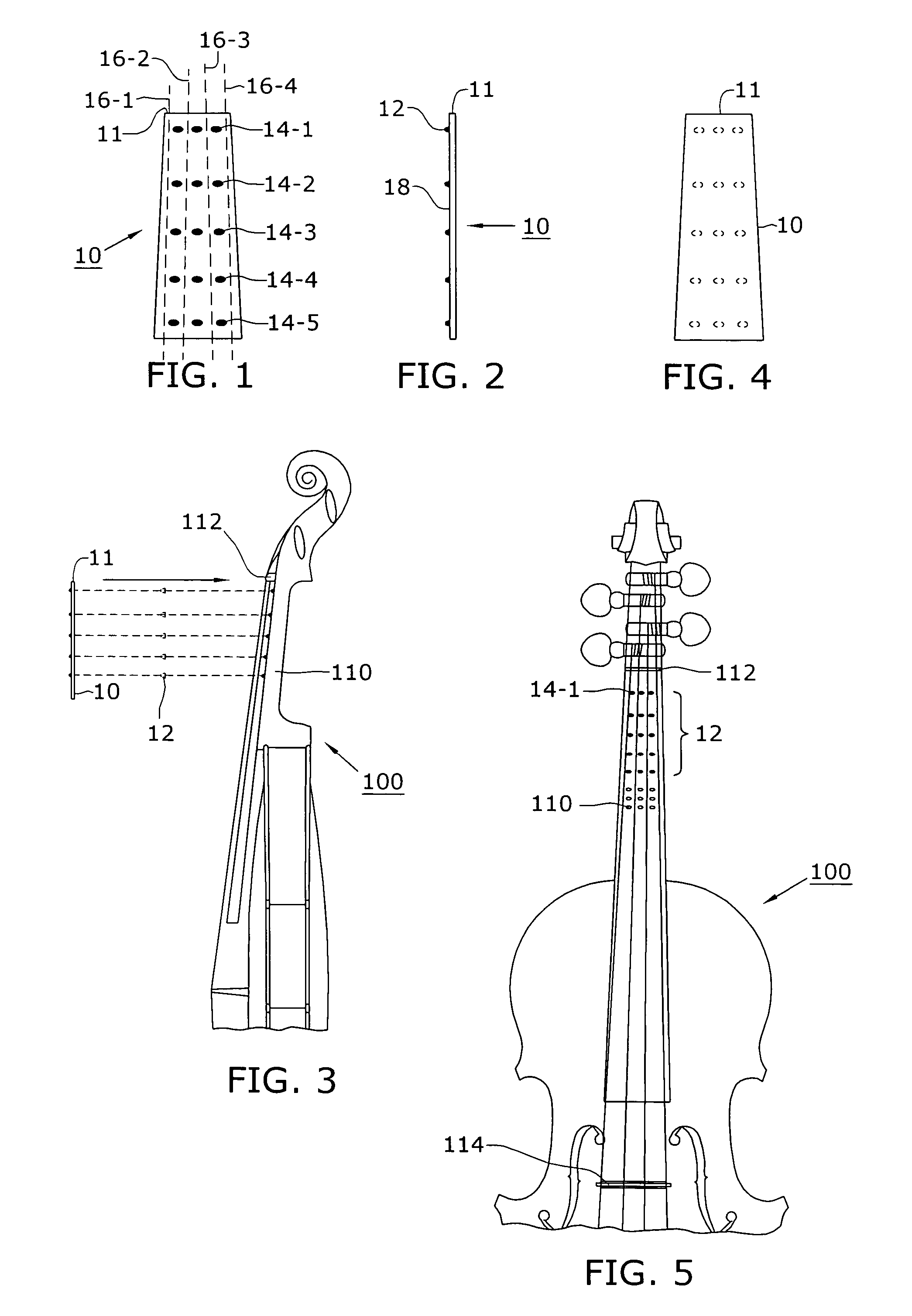Intonation aid and position locator for violin family of instruments
a violin and position locator technology, applied in the field of violin family of instruments, can solve the problems of poor tonal quality, wrong notes, and difficult process of learning to play a “fretless” violin family, and achieve the effect of raising features
- Summary
- Abstract
- Description
- Claims
- Application Information
AI Technical Summary
Benefits of technology
Problems solved by technology
Method used
Image
Examples
Embodiment Construction
[0016]FIG. 1 illustrates an exemplary removable template 10 of the present invention used to aid finger location and improve intonation when learning to play a stringed instrument of the violin family (e.g., violin, viola, cello, bass). As illustrated in FIG. 1, template 10 includes a plurality of raised features 12 disposed in a grid-like pattern as shown to provide the proper location along the fingerboard for accurate tone results. As shown, raised features 12 are disposed in a set of five rows, denoted 14-1, 14-2, 14-3, 14-4 and 14-5 in FIG. 1. In accordance with the present invention, the raised features are disposed along a row so as to be located between a pair of adjacent strings. A set of strings is illustrated in phantom in FIG. 1, with the lowest string being leftmost, indicating the placement of raised features 12 between adjacent strings, such as strings 16-2 and 16-3.
[0017]Raised features 12 are arranged, as shown below, so as to align with the position along the finge...
PUM
 Login to View More
Login to View More Abstract
Description
Claims
Application Information
 Login to View More
Login to View More - R&D
- Intellectual Property
- Life Sciences
- Materials
- Tech Scout
- Unparalleled Data Quality
- Higher Quality Content
- 60% Fewer Hallucinations
Browse by: Latest US Patents, China's latest patents, Technical Efficacy Thesaurus, Application Domain, Technology Topic, Popular Technical Reports.
© 2025 PatSnap. All rights reserved.Legal|Privacy policy|Modern Slavery Act Transparency Statement|Sitemap|About US| Contact US: help@patsnap.com


